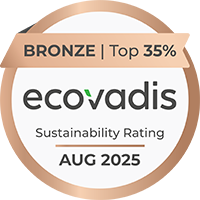For people to thrive diversity, equity and inclusion is critical. Yet finding time and resources to make a meaningful difference to organisational culture can be challenging. That’s why we’ve curated a set of online insights to fuel your inclusive practice. Each article in this series covers a key theme or issue in DE&I. Whether you have 5, 20 or 60 minutes to spare – we present these recommended resources to engage with and share.
If you have 5 minutes, try this:
Equity and Equality
Ever wondered what the difference might be between Equity and Equality? This ultra-clear animated guide gives the low down.
If you have 20 minutes, try this:

Equality Act 2010
We often hear about it, but what does it actually say? Find out all about the Equality Act 2010, including information on the act and guidance and codes of practice.
And if you can’t wait to read it in full – why not do a recap of the 9 ‘protected characteristics’ it features:
What does the Equality Act 2010 say?
There are nine characteristics protected under the Equality Act; listed below. This means a person with these characteristics cannot be discriminated against.
- Age - a particular age group (for example, 18 year olds) or range of ages (for example 18 to 30 year olds).
- Race - race, colour, nationality (including citizenship) ethnic or national origins.
- Disability – a physical or mental impairment which has a substantial and long-term adverse effect on that person's ability to carry out normal day-to- day activities.
- Religion or belief - religion, including a lack of religion. Belief refers to any religious or philosophical belief and includes a lack of belief.
- Gender reassignment - proposing to reassign gender, is undergoing a process to reassign gender, or has completed this process.
- Marriage and civil partnership - legally married or in a civil partnership. Marriage can either be between a man and a woman, or between partners of the same sex. Civil partnership is currently between partners of the same sex (NB the law is to be changed to extend civil partnership to a woman and a man).
- Pregnancy and maternity – in a non-work situation, protection against maternity discrimination is for 26 weeks after giving birth, and this includes treating a woman unfavourably because she is breastfeeding.
- Sex-being a man or a woman.
- Sexual orientation - heterosexual, gay, lesbian or bisexual, or perceived to have a particular sexual orientation, or connected to someone who has a particular sexual orientation.
If you have 60 minutes, try this:

What is equal pay?
Sticking with the Equality and Human Rights Commission (EHRC), it’s worth understanding why equal pay is so important and how organisations must stay within the law around it. A key concept – which is easy to misinterpret – is that of ‘equal work’. The EHRC website explains clearly three different kinds of ‘equal work’, what we mean by ‘equal pay’ and what to do to provide it.
For more about how we help organisations create an authentic sense of belonging, please visit the DE&I pages on our website.







